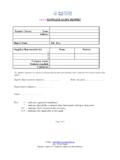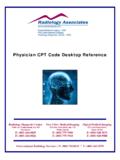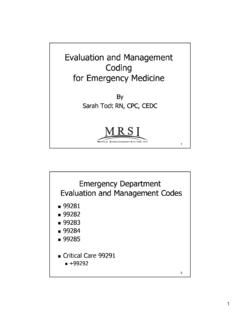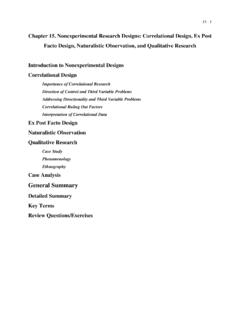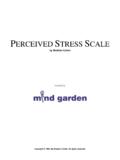Transcription of NIH Stroke Scale - - RN.org®
1 NIH Stroke Scale Reviewed August, 2017, Expires August, 2019 Provider Information and Specifics available on our Website Unauthorized Distribution Prohibited 2017 , , , LLC By Wanda Lockwood, RN, BA, MA The purpose of this course is to explain how to administer the NIH Stroke Scale , consistently and accurately. Upon completion of this course, the healthcare provider should be able to: Explain the purpose of the NIH Stroke Scale . Explain the 11 items in the Stroke Scale . Explain visual field testing. Discuss scoring parameters for all 11 items.
2 Discuss methods of administering each item. Introduction Most Stroke patients are seen initially by first responders and then emergency room nurses and doctors rather than neurologists or neurosurgeons. Numerous different assessment scales for strokes have been used, but this made consistent evaluation of condition and progress difficult. The National Institutes of Health developed to NIH Stroke Scale to provide a common language and method of assessment for all healthcare providers. This Scale focuses on impairment of function and ensures that the patient will be thoroughly examined in a consistent manner.
3 The results of testing are easily communicable and understandable when patient care is transferred and when patient s progress is being assessed. Studies have shown that the patient s results on the NIH Stroke Scale correlate with long-term progress. That is, those with low scores of 4 to 5 usually have positive outcomes and those with higher score have Purpose Goals more severe impairment and more guarded outcomes. The NIH Stroke Scale can be easily administered in about 5 minutes. Elements of the NIH Stroke Scale Healthcare providers administering the NIH Stroke Scale should be specifically trained to use the Scale and should have a copy of the Scale available when administering the assessment.
4 Without training, the results are likely to be inconsistent. Instructions Administer Stroke Scale items in the order listed. Record performance in each category after each subscale exam. Do not go back and change scores. Follow directions provided for each exam technique. Scores should reflect what the patient does, not what the clinician thinks the patient can do. The clinician should record answers while administering the exam and work quickly. Except where indicated, the patient should not be coached ( , repeated requests to patient to make a special effort).
5 It s especially important to do the Scale in order, starting with item 1 and moving through the evaluation to item 11. No question should be skipped because the examiner assumes he or she knows the answer. Generally, the patient s first response is the one scored, and once the healthcare provider has entered a score, that score should not be changed. Additionally, the patient should be scored for actual performance, not the healthcare provider s expectations of what the patient can or should be able to do. The examiner should not tell the patient the purpose of the testing as a whole or the individual items as this may increase patient anxiety.
6 Before beginning the evaluation, the examiner should ensure that he or she has a copy of the Scale and the picture and word cards necessary for testing. The examiner should score after each item rather than relying on memory to fill out the scores after completion of testing. 1a Level of Consciousness The investigator must choose a response if a full evaluation is prevented by such obstacles as an endotracheal tube, language barrier, orotracheal trauma/bandages. 0 = Alert; keenly responsive. 1 = Not alert; but arousable by minor stimulation to obey, answer, or respond.
7 2 = Not alert; requires repeated A 3 is scored only if the patient makes no movement (other than reflexive posturing) in response to noxious stimulation. stimulation to attend, or is obtunded and requires strong or painful stimulation to make movements (not stereotyped). 3 = Responds only with reflex motor or autonomic effects or totally unresponsive, flaccid, and areflexic. Level of Consciousness is assessed by greeting the patient, introducing yourself, and asking simple questions, such as How are you feeling and Do you have any pain?
8 A patient with no impairment should respond readily; and, if speech is not impaired, verbally. Those with speech impairment may attempt to speak, speak slowly and deliberately, or use body language or gestures, so careful observation is necessary. Remember that this is testing level of consciousness and not speech ability, so one should not assume that a person is not alert just because the person can t speak. Scoring: A patient who answers readily and appears to comprehend is scored as 0. If the examiner must repeat the question because the patient doesn t appear to understand or touch or otherwise stimulate the patient to get a response, then this is scored as 1 or 2, depending on the degree of stimulation needed.
9 A person who responds by movement only to painful stimuli, such as pinching of the nail beds, is scored as a 2. Those who are totally non-responsive, such as comatose patients, or have only reflexive posturing to noxious stimuli (rubbing chest or pinching nailbed) are scored as 3. Note: While medical translators are more appropriate than family members for translation during history and physical, for this Scale family members or friends may be asked to translate for the healthcare provider and patient as the instructions and responses are usually simple.
10 1b. LOC Questions The patient is asked the month and his/her age. The answer must be 0 = Answers both questions correctly. correct - there is no partial credit for being close. Aphasic and stuporous patients who do not comprehend the questions will score 2. Patients unable to speak because of endotracheal intubation, orotracheal trauma, severe dysarthria from any cause, language barrier, or any other problem not secondary to aphasia are given a 1. It is important that only the initial answer be graded and that the examiner not "help" the patient with verbal or non-verbal cues.










